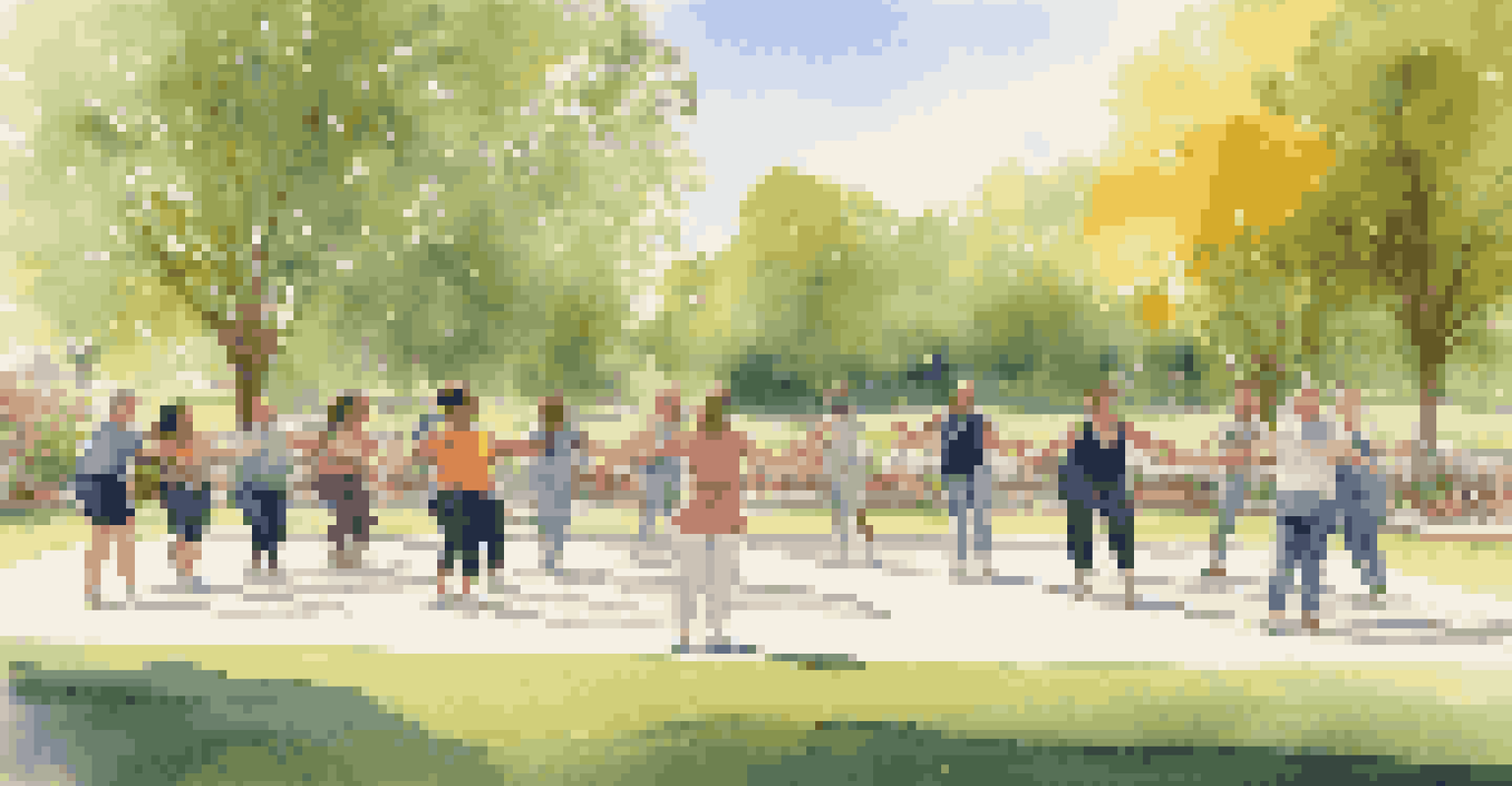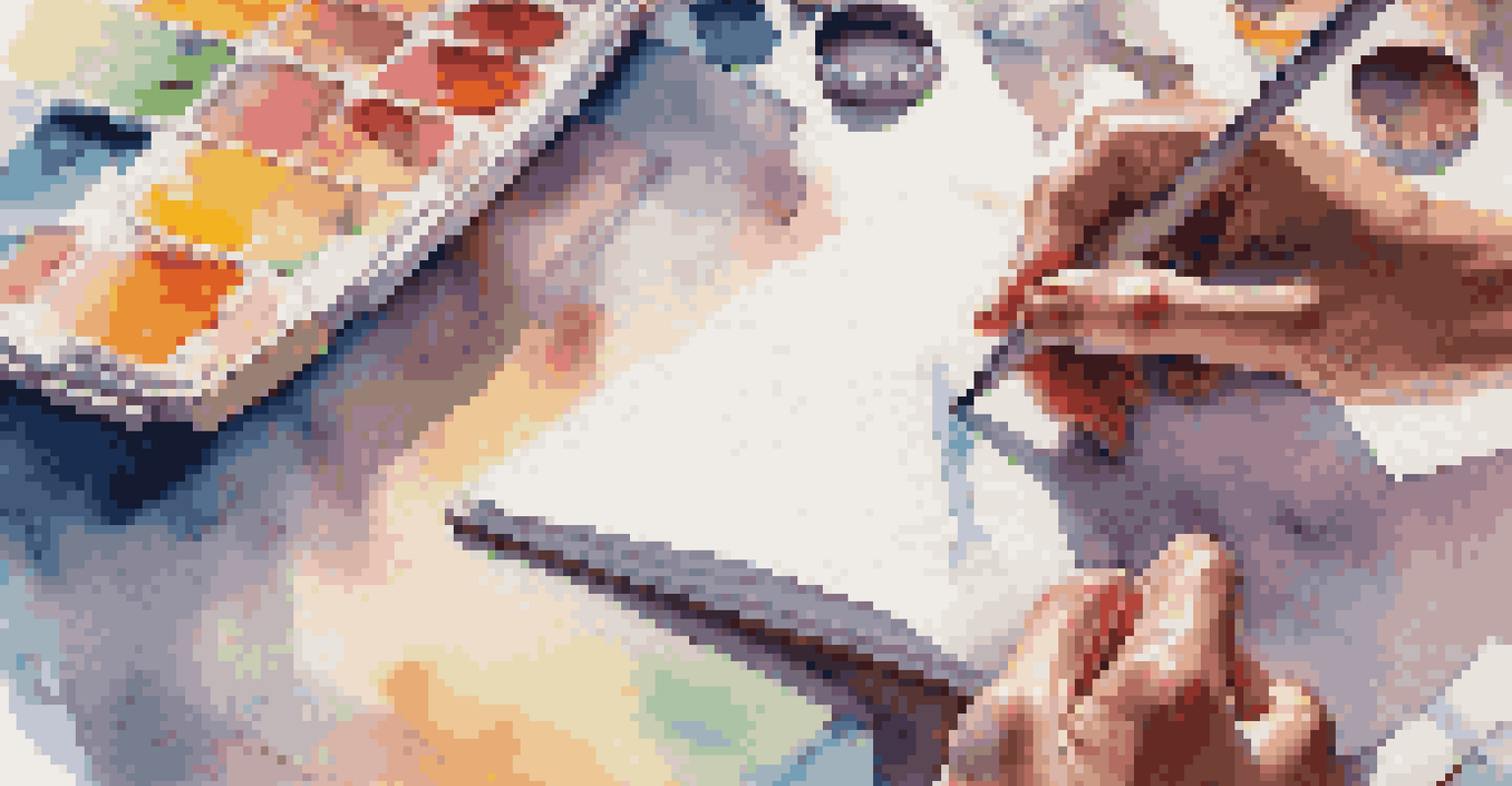Choreography for Accessibility: Designing Dance for All Abilities

Understanding Accessibility in Dance Choreography
Accessibility in dance refers to creating opportunities for everyone, regardless of their physical or cognitive abilities. It involves considering how different bodies move and interact with space, ensuring that no one feels excluded. By prioritizing accessibility, choreographers can open doors to a wider range of talent and expression.
Dance is the joy of movement and the heart of life; it should be accessible to all, regardless of their abilities.
To make dance more inclusive, it’s essential to understand the barriers that individuals might face. For example, someone with mobility challenges might struggle with traditional dance routines that require complex footwork. By recognizing these challenges, choreographers can adapt their work to be more inclusive, allowing everyone to participate fully.
Furthermore, incorporating accessibility into choreography can enrich the dance community. When diverse abilities are represented, the art form evolves, showcasing a broader spectrum of movement and expression. This not only benefits the dancers but also captivates audiences by offering new perspectives and experiences.
The Importance of Inclusive Movement Language
Inclusive movement language is vital for creating a welcoming environment in dance. It refers to the vocabulary of movement that everyone can understand and engage with, regardless of their experience level or ability. By simplifying or modifying movements, choreographers can ensure that all dancers can participate and feel confident.

For instance, instead of using terms like 'pirouette' or 'arabesque,' which might be unfamiliar to some, a choreographer could describe the movements in a more relatable way, such as 'turning' or 'stretching your leg behind you.' This approach not only demystifies dance but also encourages creativity among participants.
Embracing Accessibility in Dance
Creating inclusive dance opportunities ensures that individuals of all abilities can participate and express themselves.
Additionally, fostering an inclusive movement language helps dancers communicate effectively, creating a sense of community and belonging. When everyone can share in the same language of movement, it fosters collaboration and innovation, allowing for richer artistic expression.
Adapting Choreography for Physical Disabilities
Adapting choreography for dancers with physical disabilities involves rethinking traditional movements and structures. For example, a choreographer might modify a jump to accommodate a dancer who uses a wheelchair, focusing instead on upper body movement and expression. Such adaptations not only make dance accessible but also highlight the unique strengths of each dancer.
Inclusion is not a matter of political correctness. It is the key to growth.
It's important to remember that adaptations don't mean lowering the artistic quality of the performance. On the contrary, they can lead to innovative expressions that challenge conventional norms. By embracing creativity in adaptation, choreographers can produce stunning pieces that resonate with audiences on multiple levels.
Moreover, involving dancers with disabilities in the creative process can inspire fresh ideas and perspectives. Their input can lead to more authentic representations in dance, reflecting a broader spectrum of human experience and creativity.
Engaging Dancers with Cognitive Disabilities
When working with dancers who have cognitive disabilities, the focus should be on creating a supportive and encouraging environment. This can involve using clear, simple instructions and repetition to reinforce learning. Such practices not only help dancers feel comfortable but also build confidence in their abilities.
Incorporating games and improvisational activities can also be beneficial. These methods can engage dancers while allowing for personal expression and creativity. For example, a choreographer might use storytelling through movement, encouraging dancers to express emotions or narratives that resonate with them.
Inclusive Movement Language Matters
Using relatable and simplified movement terminology fosters a welcoming environment for dancers of every skill level.
Additionally, fostering a sense of belonging within the group is critical. Encouraging peer support and collaboration helps create a positive atmosphere where all dancers feel valued. This nurturing environment can enhance the overall dance experience, making it enjoyable for everyone involved.
Utilizing Technology for Inclusive Dance
Technology plays a significant role in making dance more accessible. Tools like motion capture and virtual reality can create immersive experiences that cater to various abilities. For instance, a virtual dance class can allow dancers to participate from the comfort of their homes, removing barriers related to transportation and mobility.
Moreover, assistive devices and adaptive equipment can enhance the dance experience for individuals with disabilities. From specialized wheelchairs designed for dance to wearable technology that tracks movement, these tools can empower dancers to explore their full range of motion and expression.
Additionally, technology can facilitate communication between dancers and choreographers. Video tutorials and online platforms can provide detailed instructions, allowing dancers to learn at their own pace. This flexibility makes it easier for everyone to engage with the choreography and feel included in the creative process.
Creating an Inclusive Dance Community
Building an inclusive dance community begins with fostering a culture of acceptance and understanding. Dance studios and companies can lead the way by promoting diversity and inclusion in their programs. Hosting workshops and events that highlight the talents of dancers with disabilities can raise awareness and appreciation for their contributions.
Collaboration among different dance groups can further enhance inclusivity. By sharing resources, knowledge, and experiences, organizations can create a more unified community that celebrates diversity. This collaboration encourages mutual respect and understanding, ultimately enriching the art of dance.
Technology Enhances Dance Inclusivity
Innovative tools like virtual reality and adaptive equipment expand access to dance, enabling participation from diverse backgrounds.
In addition, outreach programs that target underrepresented communities can help bridge gaps in access to dance. By providing free or low-cost classes, resources, and performance opportunities, these programs can inspire and empower individuals from all backgrounds to partake in the joy of dance.
The Future of Dance: Embracing All Abilities
The future of dance lies in its ability to embrace and celebrate all abilities. As more choreographers and dancers advocate for inclusivity, the landscape of dance is changing for the better. This shift not only enriches the art form but also reflects the diverse society we live in today.
By prioritizing accessibility, the dance community can cultivate a culture where everyone feels welcome. As audiences witness performances that showcase talent from all walks of life, they become more aware of the importance of inclusivity in the arts. This awareness can lead to broader societal changes, encouraging acceptance and understanding beyond the stage.

Ultimately, the evolution of dance towards inclusivity will inspire future generations of dancers and choreographers. As we continue to challenge norms and push boundaries, the dance world can become a vibrant space where every individual can express themselves freely, creating a tapestry of movement that reflects the beauty of diversity.